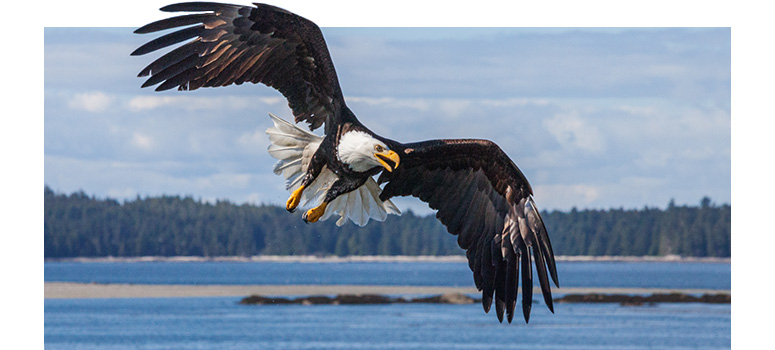Last month, the U.S. Department of the Interior announced changes to regulations established in 1973 implementing the Endangered Species Act (ESA) and endeavoring to protect endangered and threatened species and their habitats.

Photo by davemantel
BY BILL PICTURE
Published: September, 2019
Last month, the U.S. Department of the Interior announced changes to regulations established in 1973 implementing the Endangered Species Act (ESA) and endeavoring to protect endangered and threatened species and their habitats.
At first pass, the changes appear innocuous enough not to raise the eyebrow of the everyday American—for the most part, just a word or two changed here and there. But environmental watchdogs believe these seemingly little changes will have an outsized impact on wildlife protection efforts. Environmental groups say the move is just the latest attempt by Secretary of the Interior David Bernhardt to poke holes in the ESA and afford the oil and gas companies that he once represented as a lobbyist access to land that the ESA protected from mining and drilling activity.
Bernhardt is probably best known to Californians for his efforts on behalf of Central Valley farmers, in his role as a lobbyist, to weaken ESA protections for the Delta smelt, a small fish that lives in the Sacramento-San Joaquin Delta, so that river water can be used to irrigate crops. Environmentalists argued that diverting water will be the straw that broke the fast-dwindling smelt’s back. Bernhardt took this fight with him to Washington after being confirmed, immediately directing his staff to roll back protections for the smelt, which would help the President make good on a campaign promise to Central Valley farmers to send more water their way.
“And the implications of these new changes will be massive,” said Aaron Weiss, deputy director of the Colorado-based Center for Western Priorities.
While the dockets containing the changes are indeed public, Weiss says the legalese is likely to leave people without law degrees scratching their heads. For example, the word “probably” has been changed to “likely” as it pertains to how factors contribute to the extinction of a species.
“That doesn’t seem like a big deal, does it?” said Weiss. “Well in legal-speak that’s a major change. ‘Probably’ means ‘maybe.’ And proving that something is ‘likely’ going to happen is much more difficult than proving that maybe it’ll happen.
“That’s no coincidence,” Weiss continued. “Bernhardt is a lawyer’s lawyer, and he knows how to word things so that he can push this stuff through without raising a lot of red flags.”
Another change effectively does away with a “blanket rule” that afforded many of the same protections enjoyed by endangered species to species identified as “threatened.” In doing so, Bernhardt eliminated the ability of a species that scientists have already identified as heading toward endangered status to regain its footing.
“The reason for that middle step was to keep threatened species off the Endangered Species List,” Weiss said. “So what Bernhardt is doing is making it more likely that a threatened species will become endangered, and then making it harder for that species to actually get endangered status. So if you take away those protections, then you’ve made it more likely that a threatened species will go extinct. That’s what this all is, in a nutshell.”
A bit of history
The ESA, passed in 1973 and signed by President Nixon, was designed to protect animals and plants from going extinct by protecting critical habitat and banning the killing of listed species. Upon the act’s passage, Congress found that “these species of fish, wildlife, and plants are of esthetic, ecological, educational, historical, recreational, and scientific value to the Nation and its people.”
Scientists have credited the ESA with bringing back from the brink of extinction such iconic species as the bald eagle, the grizzly bear, the California condor, the American alligator, the peregrine falcon, the humpback whale, the black-footed ferret, the Florida manatee, the Tennessee purple coneflower and others.
Environmentalists and industry prefer using different measures to define the ESA’s “success.” Environmentalists point out that 99 percent of the nearly 2,000 species protected under the ESA have not gone extinct, and 41 percent of the listed species have either increased or stabilized their population numbers as a result of ESA protections. Industry representatives, on the other hand, question the success of the ESA by pointing out that only a very small number of species have ever been removed from the list. This reasoning—that populations are not increasing to the point that protection is no longer needed—seems to ignore the fact that many more species could have gone extinct without ESA protections.
Where will the bears go?
As for identifying critical habitat worthy of protection to ensure a species’ survival, the Interior Department says it’s 100 percent onboard with that as well—unless it’ll prevent someone from making a buck.
A U.S. Fish & Wildlife Service press release reads, “While this administration recognizes the value of critical habitat as a conservation tool, in some cases, designation of critical habitat is not prudent.” U.S. Secretary of Commerce Wilbur Ross added, “The revisions finalized with this rulemaking fit squarely within the President’s mandate of easing the regulatory burden on the American public.”
In the case of the polar bear, environmentalists have been fighting to apply the Endangered Species Act to protect lands south of the Arctic Circle that scientists predict the bears will call home once rising temperatures have melted their native habitat. But under the new changes, only a species’ current habitat can be protected.
“That’s a terrible way to protect a species when we know with incredible certainty that it will be affected by climate change,” Weiss said. “But if someone doesn’t believe that climate change is real, then you can’t really use the foreseeable impacts of climate change to argue your case to them. So we’ve effectively putting blinders on scientists.”
The Interior Department, however, argues that the changes improve the Endangered Species Act by taking the guess work out of its application. “The act’s effectiveness rests on clear, consistent and efficient implementation,” explained Secretary Bernhardt in a written statement.
Weiss believes people should be outraged, but understands why they’re not.
“It’s outrage fatigue,” he said. “Every day it seems like there’s something new to be outraged about, and eventually you stop listening so your head doesn’t explode. But it’s also that we don’t have powerful symbols to rally around now like we did at the beginning of the environmental movement, when rivers were literally on fire and the bald eagle was about to disappear. It’s hard to make people understand, ‘This little fish you’ve never seen or even heard of is really, really important.’”

The California condor, the largest North American land bird, dwindled to a popularion of 27 in the 1980s. Thanks to the Endangered Species Act, there are now about 450 individuals in existence. Photo by Bob Wick/BLM

The Florida manatee is another beneficiary of the Endangered Species Act. The animal’s status was changed from “endangered” to “threatened” in 2017 due to increasing populations. Photo courtesy of BLM

